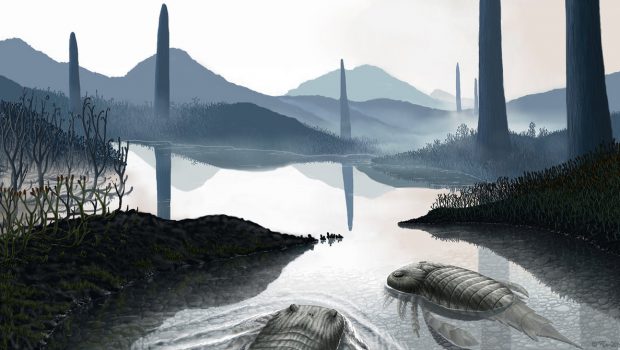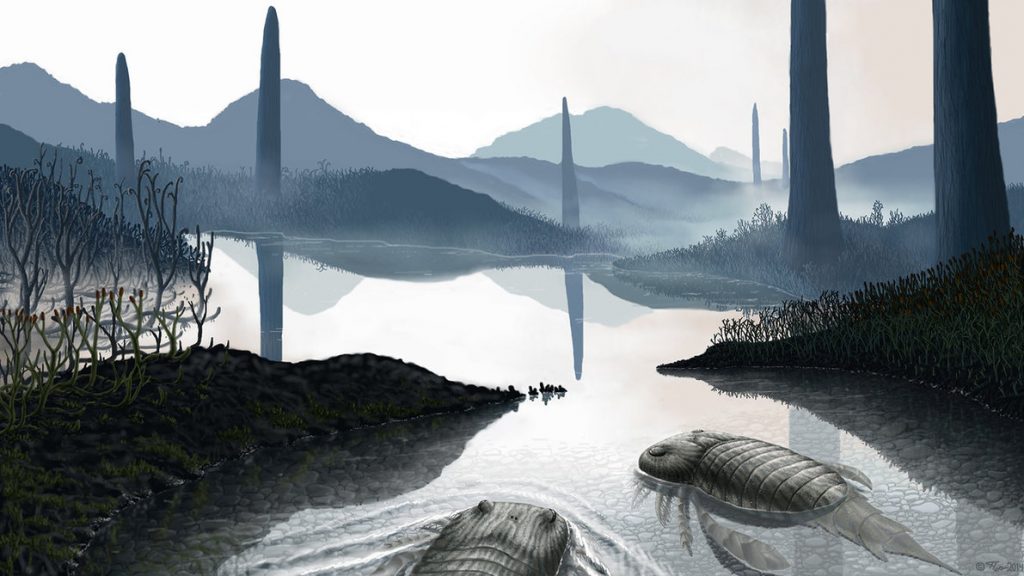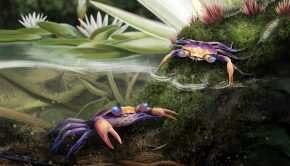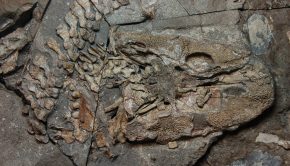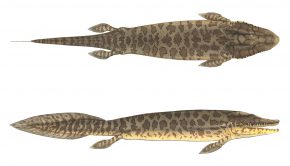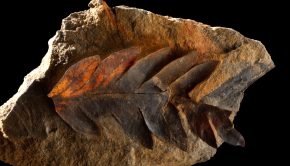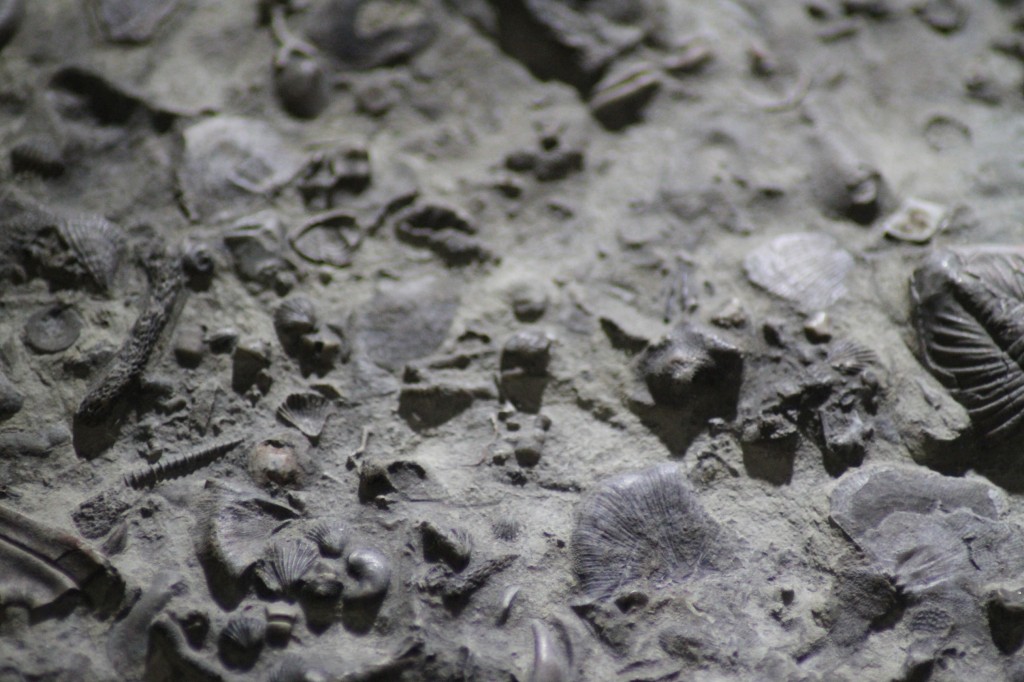Episode 69: Fungal symbioses
Plants, Animals and fungi; these are all three of the Kingdoms of life we’re all most familiar with, but what you might not know is that fungi are more closely related to animals than they are to plants. Stranger still is that the vast majority of terrestrial plants live symbiotically with fungi.
In this episode, we interview Prof. Marc-André Selosse, Muséum National d’Histoire Naturelle, Paris. We discuss this symbiotic relationship and how it helped both groups overcome the massive challenge of adapting to life on land. We further go on to look at exquisitely-preserved fossils which display cellular details and reveal the first evidence of this relationship and discuss the potential identity of a particularly enigmatic giant fossil. We end the conversation theorising about what benefits a true understanding of this symbiosis could have on the future of agriculture.
Podcast: Download (Duration: 1:00:54 — 84.0MB)
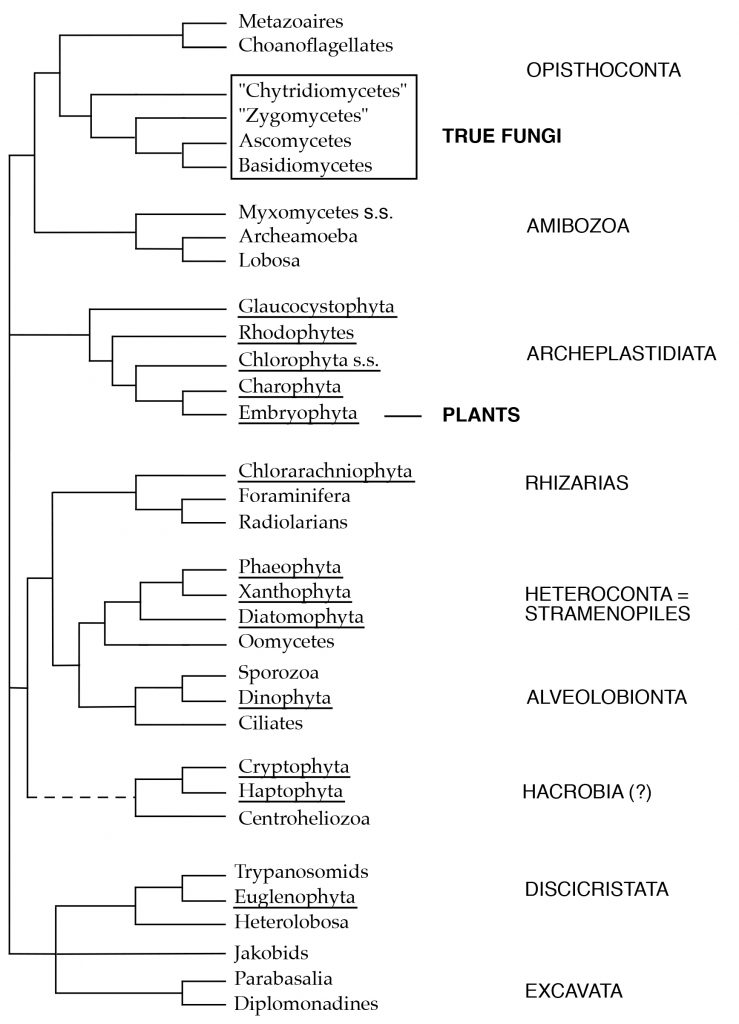
A cladogram displaying the relationship between Eukaryotes (the group including all life except for Bacteria and Archaea). Note that Fungi are more closely related to animals (Metazoa), at the top of this diagram, than they are to Embryophyta (plants). Image credit: Marc-André Selosse.
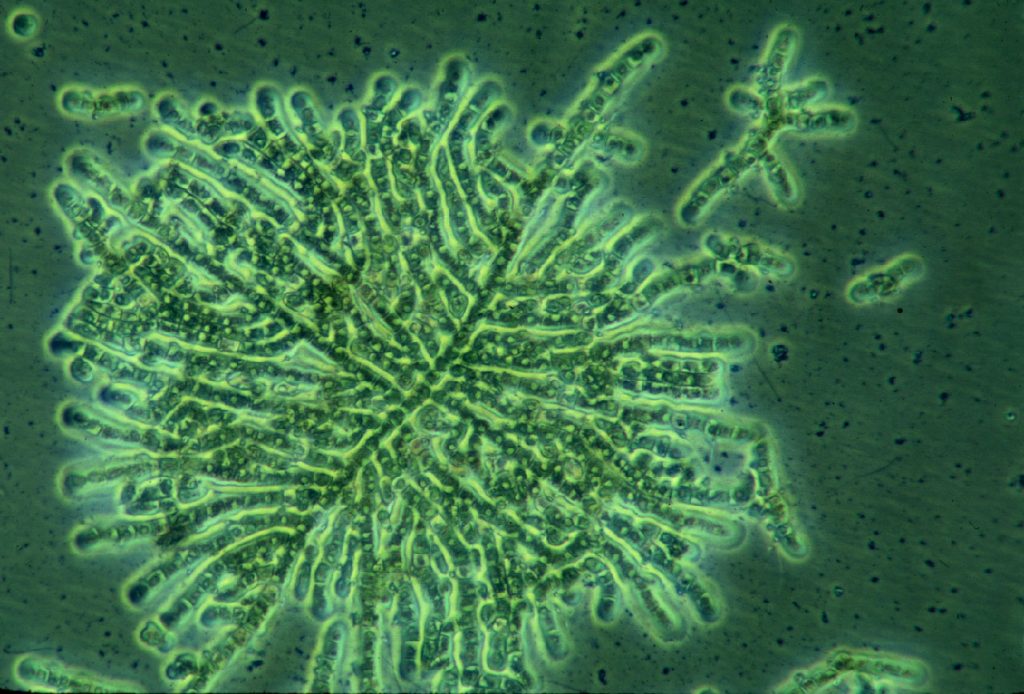
The freshwater charophytes (green algae) are the closest relative to embryophytes (plants). By examining them, we can get a better idea about what early aquatic plants may have looked like. Image credit: http://www.life.umd.edu/labs/delwiche/Strp/Chlorophyta/charophyceae/charophyceae.html
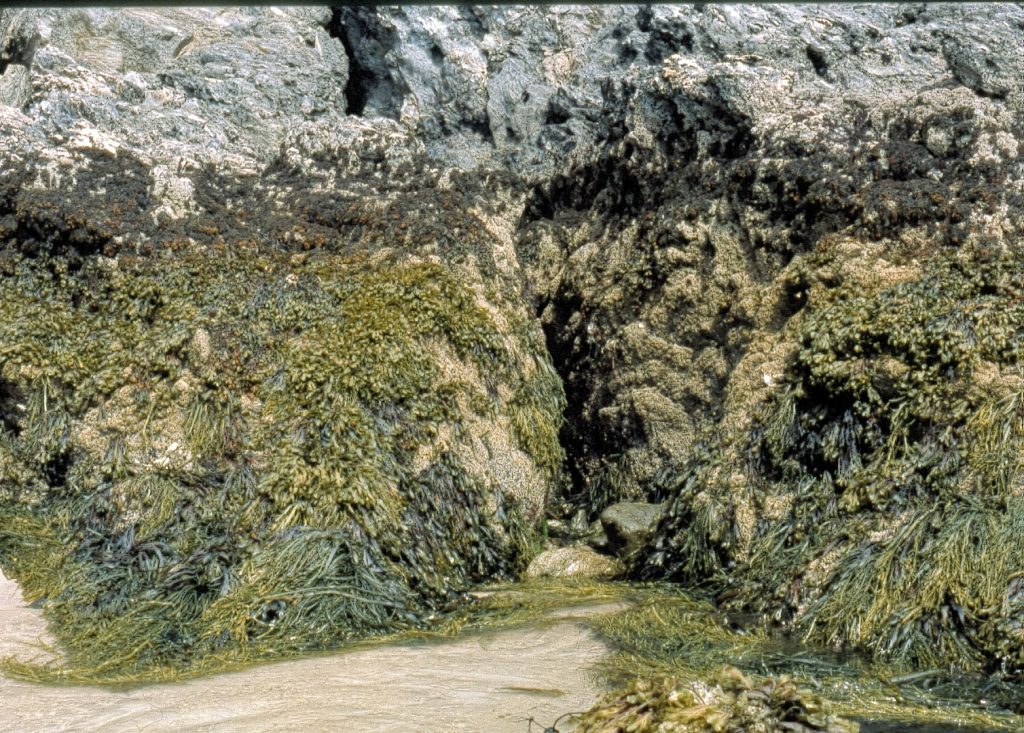
Having both evolved in an aquatic environment, plants and fungi would eventually colonise the land. There are many different algae living in the tidal zone today, at the interface between the marine and the terrestrial realms. Such environments highlight the many challenges these groups would have to have overcome during terrestrialisation, primarily desiccation, but also in nutrient provision. The colonisation of land would most likely have occurred via such an environment, although most probably from freshwater. Image credit: Marc-André Selosse.
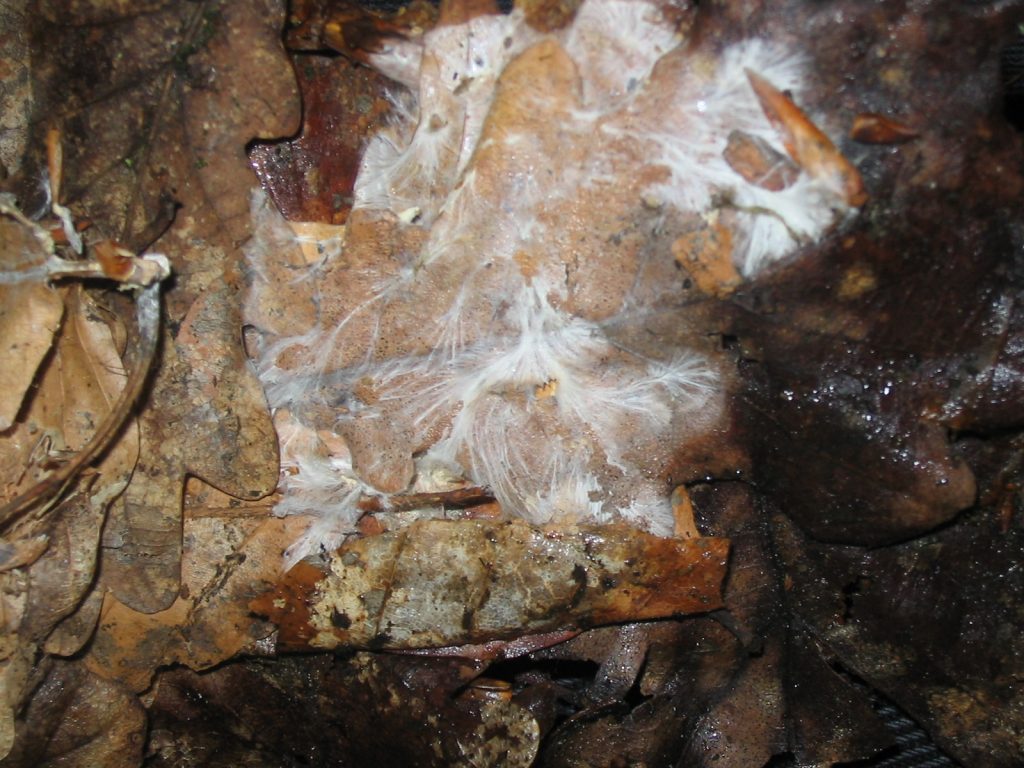
In the terrestrial realm, we commonly find both fungi and plants alive today. Fungi are not autotrophic (able to synthesise their own food) and therefore on their immediate environment to source energy. They are often involved in the decomposition of organic matter or are parasitic, but they can also live in symbiosis with plants. On this picture of a leaf decomposing fungus, the many very small filaments (= hyphae) that form the mycelium are conspicuous. Image credit: Marc-André Selosse.
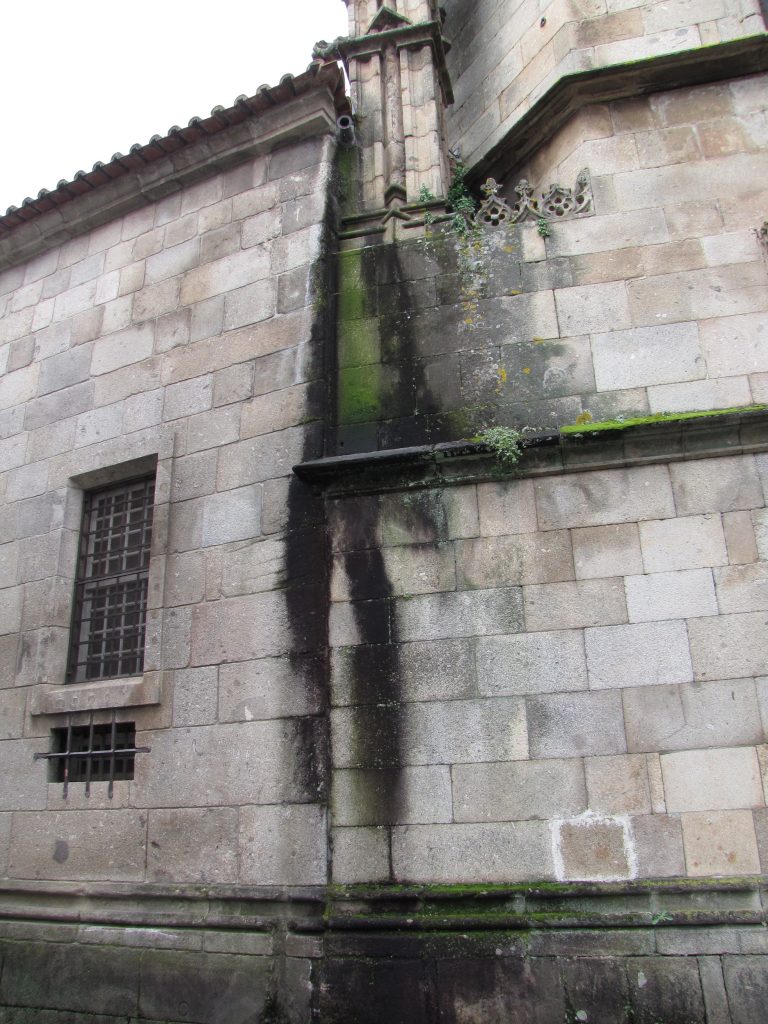
We’re all familiar with terrestrial plants, but these green coatings, often present on walls and the sides of trees, represent one of the few groups of plants which don’t rely on fungi for survival. Such photosynthetic biofilms encompass cyanobacteria and eukaryotic algae. Image credit: Marc-André Selosse.
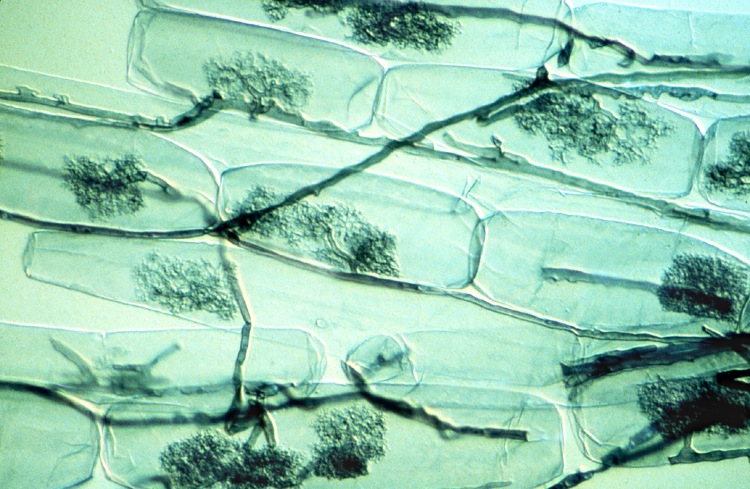
The majority of terrestrial plants possess a symbiotic relationship with fungi. In this image of the cells in the roots of a modern plant (maize), you can see the fungal hyphae and the ‘arbuscules’ (dark, tree-shaped structures) penetrating the plant cells. Image credit: L. Peterson.
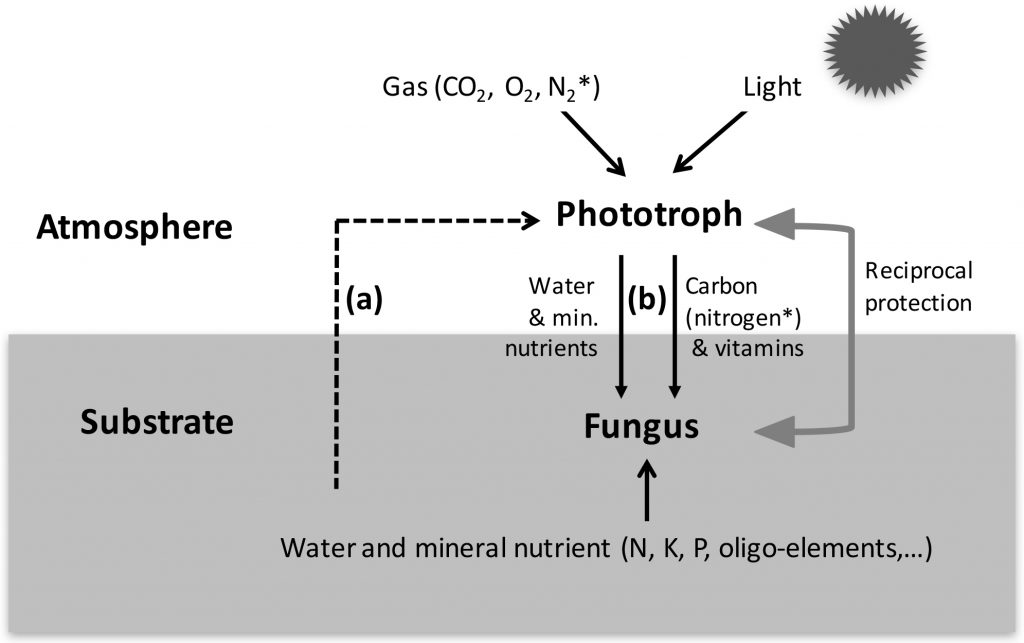
This diagram illustrates the relationship between plants and fungi in terrestrial ecosystems. Fungi provide water and minerals to the plant and in return get carbon and vitamins back. The asterisk (*) indicates resources exploited or provided by nitrogen-fixing cyanobacteria only. The non-symbiotic exploitation of substrate resources (a) is used by some unicellular phototrophs and some plants from nutrient-rich environment; most plants and lichens currently use the symbiotic association with a fungus (b). Reference: M.-A. SELOSSE, C. STRULLU-DERRIEN, 2015. Origins of the terrestrial flora: a symbiosis with fungi? in M.-C. Maurel and P. Grandcolas (Eds.) ORIGINS – Studies in Biological and Cultural Evolution. BIO Web of Conferences 4, 00009. EDP Science, Paris.
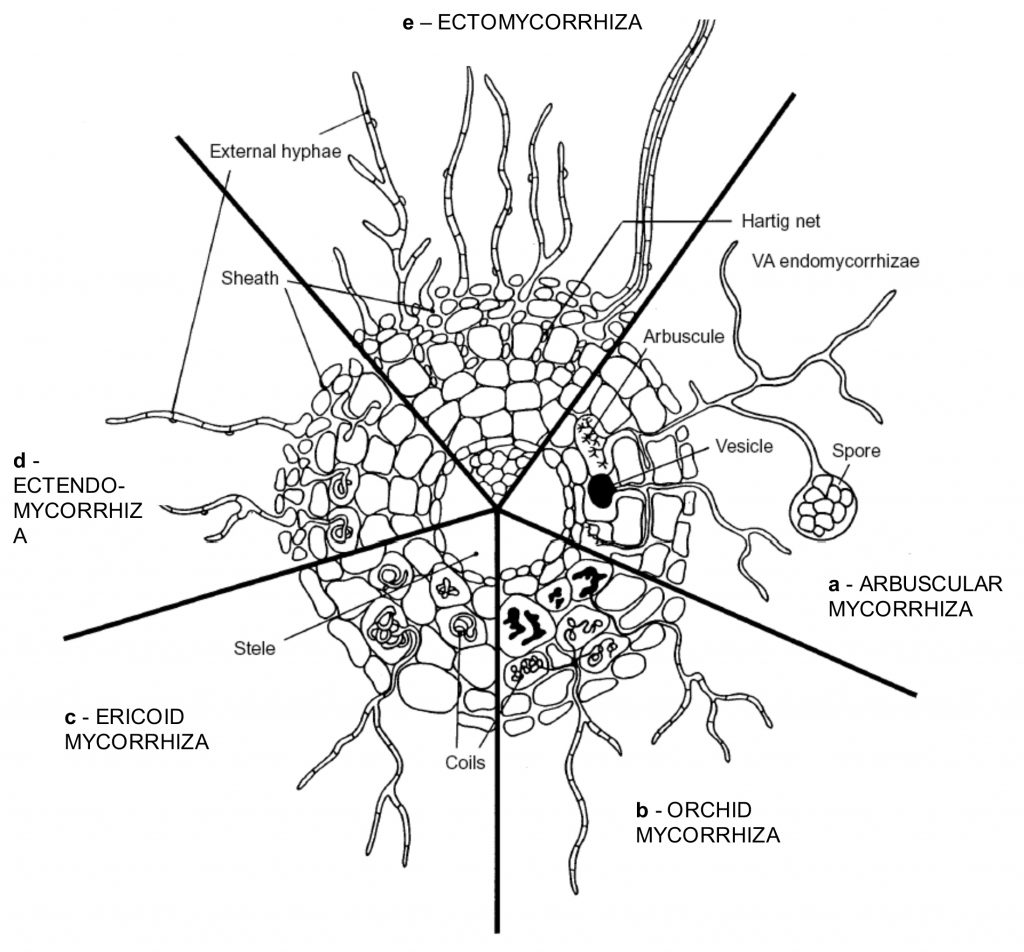
Diagram of the main mycorrhizal associations (plant-fungi symbioses) in the extant land flora. (a), associations with Glomeromycetes; (b–e) associations with Basidio- and Ascomycetes. Reference: M.-A. SELOSSE, F. LE TACON, 1998. The land flora: a phototroph-fungus partnership? Trends in Ecology and Evolution 13: 15-20.
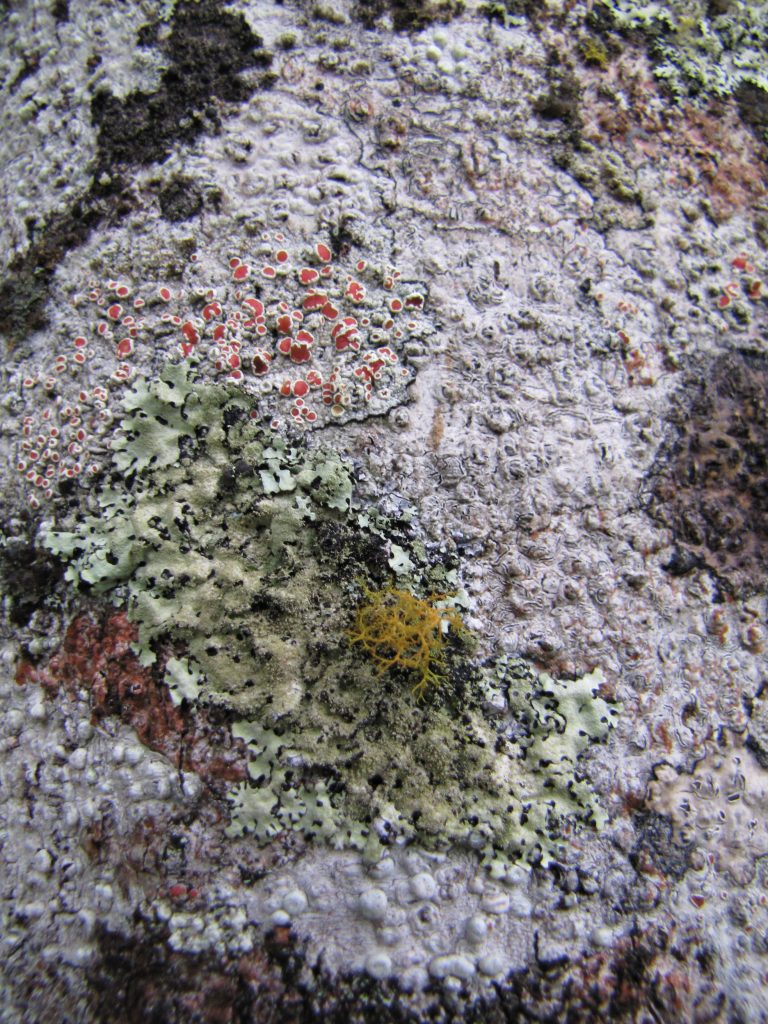
Lichens are an association of two types of fungi and an alga, showing that this symbiosis is not just between embryophytes and fungi, but can be with other phytotrophs. Image credit: Marc-André Selosse.
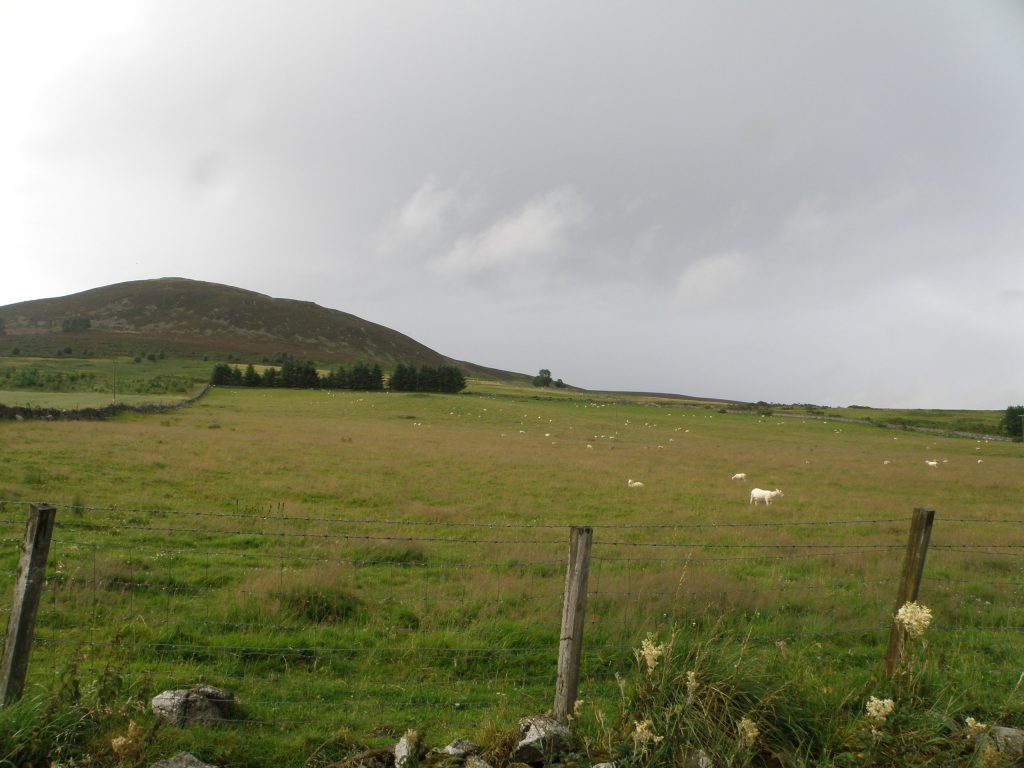
Turning to the fossil record, a particularly famous Devonian lagerstätte for the preservation of early terrestrial ecosystems is the Rhynie Chert, Aberdeenshire, Scotland. Here, hot springs, much like the geysers in Yellowstone National Park, were able to silicify plants, preserving exquisite cellular details. Unfortunately, the outcrop completely covered by fields, but sampling is permitted from time to time.
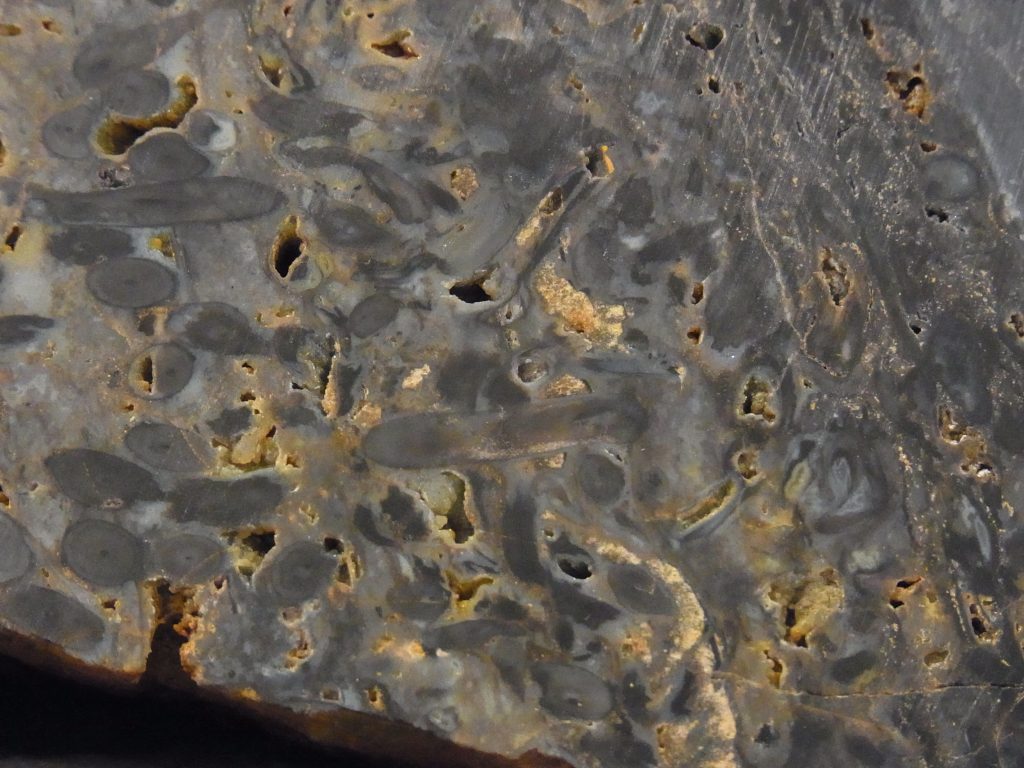
One of the plants from the Rhynie Chert is Aglaophyton, these were proto-vascular, meaning that they didn’t have the same kinds of water (xylem) and food transportation (phloem) systems as many modern plants do. Here we see rhizome sections. Image credit: Marc-André Selosse.
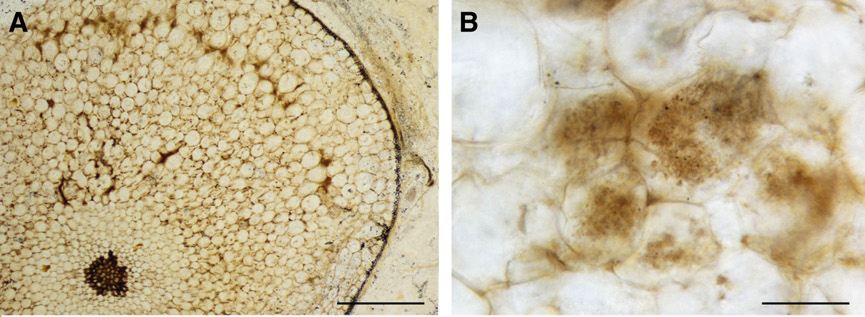
The preservation of Aglaophyton in the Rhynie Chert is so good that even individual cells along with with mycorrhizae can be identified. Branch-like arbuscules, similar to the previous picture are visible. ‘Fungal partnerships in. Aglaophyton major, Fungal endophyte of the glomeromycotan type in Aglaophyton major from the Devonian Rhynie Chert. A, Transverse section of an aerial axis showing the well-defined colonized zone in the outer cortex (slide PB V15637 from the Natural History Museum, London). B, Arbuscule-like structures in an aerial axis (slide from the University of Munster; photograph courtesy of H. Kerp).’ Reference: Kenrick, P. and Strullu-Derrien, C., 2014. The origin and early evolution of roots. Plant physiology, 166 (2), 570-580.
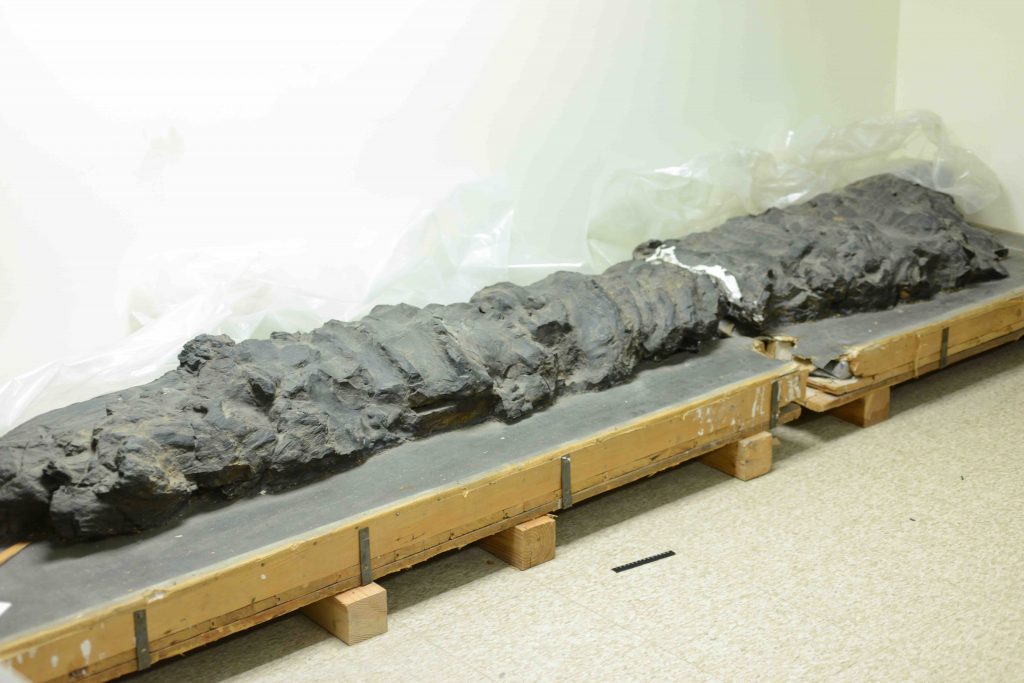
Another possibly symbiotic fossil from the Devonian, of a more spectacular size, is Prototaxites. This fossil measured up to 8m (26ft) tall and can be found almost world-wide.
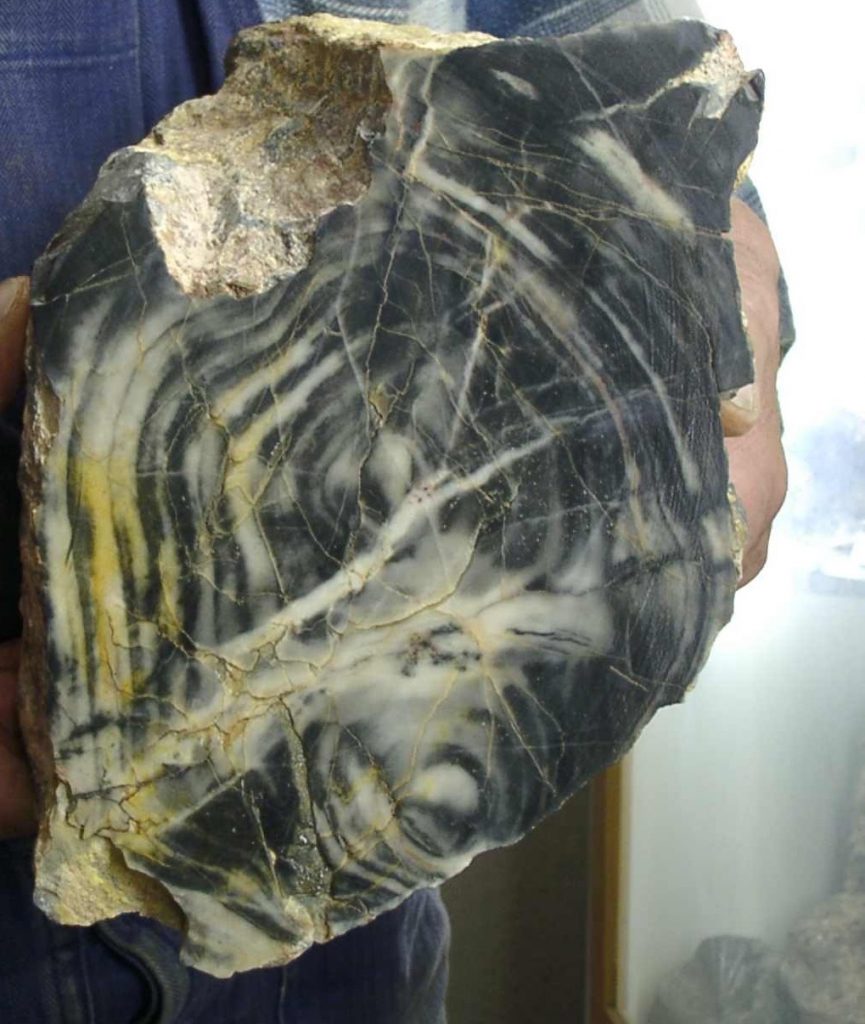
Cut in half, Prototaxites possesses concentric-like rings, which may be because of growth, much like tree rings today. Various objects, including plants, can be seen to have become trapped within its rings as it grew.
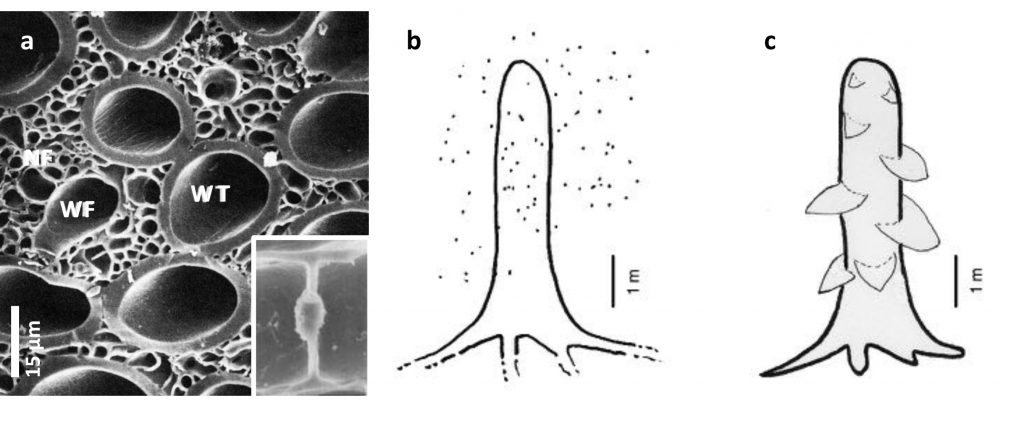
On a microscopic scale, Prototaxites can be seen to be made up of a series of large, walled, tubes and smaller fine tubes. This construction led earlier researchers to conclude that Prototaxites was the fruiting body of a fungus. However, it might be possible that it was a fungi-algae symbiont, much like a giant lichen, e.g. with the large and small tubes representing algae and fungi respectively. The lack of any spores or propagules may also favour the interpretation that it was a lichen and not solely a fungus. There is additional evidence for photosynthesis in that we now find ramifications/bifurcations in the trunk and scales. Both these would increase the surface area of the organism, potentially aiding photosynthesis. If Prototaxites was a tall photosynthetic structure, then competition might explain why it died out as the first forests arose. Reference: M.-A. SELOSSE, 2002. Prototaxites: a 400 Myr old giant fossil, a saprophytic holobasidiomycete or a lichen? Mycological Research 106: 642-644)

